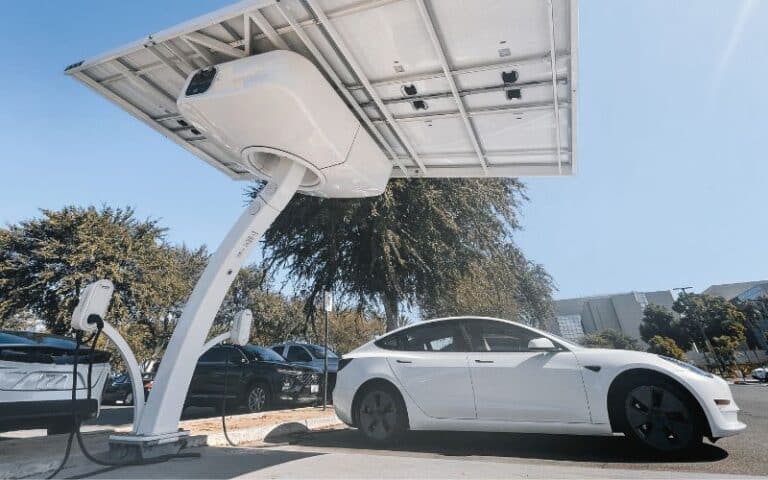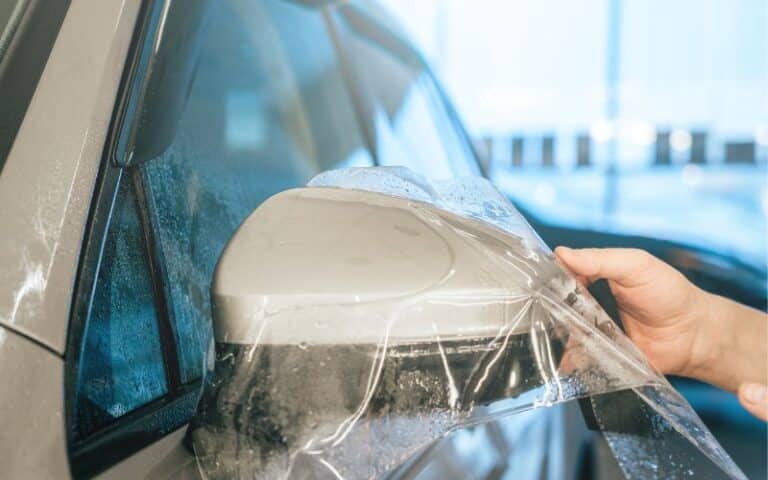503 Server Maintenance Tesla: Explained!
Regarding electric vehicles, Tesla is undoubtedly one of the brands that have taken the lead.
However, even vehicles with the most advanced technologies can encounter occasional issues.
One such issue is the common “503 Server Maintenance Error” that Tesla owners might encounter.
Therefore, if your Tesla is displaying a “503 server maintenance error” and you are worried about the meaning and causes, worry no more, as this article answers your questions.
The 503 Server Maintenance Error is an HTTP status code indicating that the server can temporarily not handle the request due to maintenance or overloading. When you see this error on your Tesla mobile app, it means there is a temporary disruption in the communication between your car and Tesla’s servers. It’s essential to note that this issue is temporary.
In this article, I will unveil the meaning of “503 server maintenance” on your Tesla. I will also explore the causes of this error display.
In addition, I will walk you through the troubleshooting measures you can employ if you encounter the 503 error.
What Does 503 Server Maintenance Error Mean on Tesla?

The 503 Server Maintenance error is a standard HTTP status code indicating that a server can temporarily not handle the request.
In Tesla’s case, this message typically appears on the Tesla mobile app or website when there is a scheduled maintenance or an issue with their servers.
The 503 server maintenance error is a temporary inconvenience that occasionally occurs due to server maintenance, overloads, or network issues.
The fact that Tesla, a company known for its fore-front technology and innovation, experiences server maintenance events explains the transformation happening in the automotive industry.
Therefore, while the 503 Server Maintenance message may be a momentary inconvenience, it serves as a reminder of the electric vehicle industry’s rapid evolution.
As more automakers embrace electric technology, server maintenance events will likely become more commonplace as the industry adapts to meet growing demand and maintain new software.
Apart from the common 503 server maintenance error, other HTTP standard codes apply to various web applications and services, including Tesla’s systems, for different purposes.
Check the table below for some of the codes and their meanings.
| Codes | Meanings |
|---|---|
| 200 | OK: The request was successful |
| 201 | Created: A new resource was created. |
| 204 | No Content: The request was successful, but there was no response body. |
| 400 | Bad Request: Invalid request parameters. |
| 401 | Unauthorized: Authentication required or credentials invalid. |
| 403 | Forbidden: Access to the resource is illegal. |
| 404 | Not Found: The requested resource was not found. |
| 429 | Too Many Requests: Rate limit exceeded. |
| 500 | Internal Server Error: Something went wrong on the server |
| 502 | Bad Gateway: The server received an invalid response from an upstream server. |
So, the 503 server maintenance error is just like every other standard HTTP code.
As Tesla continues to improve its services, occasional issues like the 503 server error are a small price to pay for the incredible driving experience that Tesla owners enjoy.
Four Common Causes of the Server Maintenance Error in Tesla
Knowing the causes of the server maintenance error in your Tesla and how to respond is necessary as it can help you easily navigate this error.
Therefore, below are the most common causes of the server maintenance error in your Tesla.
#1. Scheduled Maintenance
Tesla frequently performs server maintenance to enhance their services, performance, and security and introduce updates or fix issues.
During these scheduled maintenance windows, you may encounter the 503 error if you try to access certain features that rely on server communication.
This temporary inconvenience results from Tesla’s commitment to maintaining the integrity of its brand while working diligently behind the scenes to enhance your overall user experience.
#2. Server Overload
Like a crowded highway, Tesla’s servers can get congested, especially during peak usage hours or after major software update releases.
When too many requests flood the server, this can lead to delays as the servers struggle to process all increased requests.
So, your Tesla might respond with a 503 error to prioritize essential functions.
This response is just a balancing act within Tesla’s server infrastructure, illustrating the company’s commitment to maintaining an optimal user experience despite surges in demand.
This act ultimately exemplifies Tesla’s dedication to innovation and customer satisfaction.
#3. Software Glitches and Heavy Firmware Updates
Just like any software, Tesla’s operating system can encounter bugs. These glitches can disrupt server communication and trigger the 503 error.
Furthermore, it can strain its servers when Tesla releases significant firmware updates.
If your car is in the process of downloading and installing a large update, it might struggle to handle other requests.
In such a case, Tesla may temporarily take the servers offline to manage the situation, thereby displaying the 503 error.
#4. Network Connectivity
Poor network connectivity or temporary internet outages can disrupt the communication between your Tesla and Tesla’s servers, leading to this error.
If your Tesla loses its connection to the internet or Tesla’s servers, it can’t fetch the data it needs.
This situation can result in a 503 error when accessing services that rely on a connection.
How Do You Fix a Tesla 503 Server Error?
The 503 Server Maintenance Error on a Tesla might seem difficult, but it’s usually a temporary issue with common causes.
Understanding the exact cause and following some troubleshooting steps can help you get back to enjoying the full range of features and convenience of your Tesla.
If you experience a server maintenance error in your Tesla, you may first restart your mobile app or device.
However, if the issue persists, below are some troubleshooting steps you can employ to resolve this error:
#1. Wait for a While
In most cases, the 503 error is temporary and will resolve once Tesla’s maintenance or server load stabilizes.
If the error occurs during a peak usage period or scheduled maintenance, it’s often best to wait it out.
Tesla usually resolves these issues relatively quickly. Therefore, waiting a while before trying again is often the simplest solution.
#2. Check Network Connectivity
Sometimes, the cause of the 503 error can be network issues on your end. So, ensure your Tesla has a stable internet connection. If not, reconnect or move to an area with better coverage.
Meanwhile, it’s essential to keep your Tesla’s software up-to-date. Software updates that address bugs and improve server communication rectify 503 maintenance errors.
#3. Stay Informed
To stay well-informed about Tesla’s latest developments and to ensure a seamless ownership experience, it’s necessary to use Tesla’s official channels for updates on scheduled maintenance.
Proactively monitoring these announcements can be beneficial, as it enables you to stay ahead of the curve and anticipate any planned server downtime.
This act helps you stay well-prepared and allows you to make informed decisions about your vehicle usage, avoiding any inconvenience that unexpected maintenance may bring.
#4. Contact Tesla’s Support
If the error persists, or you suspect it’s unrelated to scheduled maintenance, don’t hesitate to contact Tesla’s customer support.
When you contact Tesla’s customer support, you can rest assured that you’ll receive a comprehensive and tailored solution to address your specific situation.
No matter the problem’s complexity, Tesla’s customer support is always there to lend a helping hand.
Is the 503 Server Maintenance Error Common in Model 3 Tesla?
It’s important to note that the 503 maintenance error can occur in any technology or automobile. Hence, it’s not limited to Model 3 Tesla alone.
The Tesla Model 3, known for its sleek design and amazing features, has captured the hearts of many.
However, like any complex technology, it’s not resistant to occasional issues.
The 503 Server Maintenance Error is not a complex issue. It’s just an HTTP status code that indicates a temporary unavailability of a web server.
It’s like a digital “Sorry, we’re closed for maintenance” sign.
So, when a model encounters this error while using the Tesla app or website, the server responsible for handling your request is undergoing maintenance or experiencing issues.
Regardless of the model, the frequency of the 503 Server Maintenance Error on your Tesla largely depends on various factors.
First, using the Tesla app or website during a scheduled maintenance window makes you more likely to encounter the error.
Meanwhile, Tesla usually announces these maintenance periods in advance.
Also, Tesla’s popularity has increased, leading to a larger user base. So, more users can lead to higher server errors during peak times.
Furthermore, Tesla frequently releases over-the-air (OTA) software updates, which can cause temporary spikes in server traffic as users rush to download the latest features.
In addition, Tesla continuously works to improve its server infrastructure. Over time, these improvements can reduce the occurrence of server errors.
Therefore, due to the technological evolution in the automobile industry, occasional server errors are par for the course.
While the 503 Server Maintenance Error may occasionally inconvenience Tesla Model 3 owners, it’s not every day.
So, it’s essential to note that Tesla is dedicated to providing a seamless user experience and works to minimize such errors.






